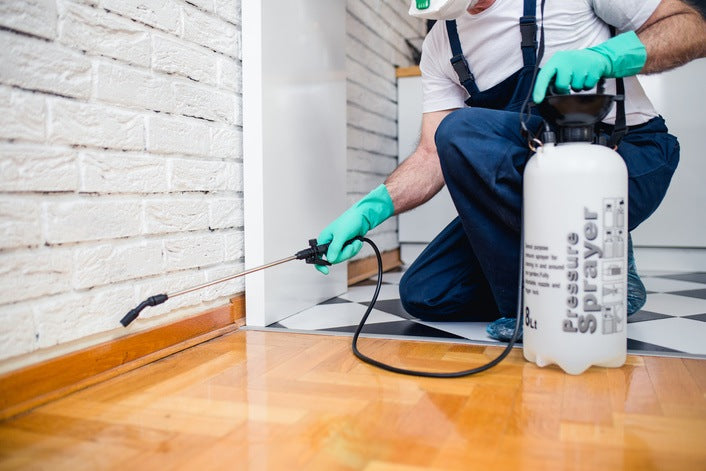Assured Satisfaction with Expert Services from Pest Control Lockhart
Assured Satisfaction with Expert Services from Pest Control Lockhart
Blog Article
Exploring Problem and Treatment Strategies on the planet of Insect Control
The landscape of parasite control encompasses a myriad of difficulties, specifically as infestations of common home bugs proceed to evolve. By integrating precautionary procedures with innovative management techniques, such as Integrated Insect Administration (IPM), home owners can much better safeguard their environments.

Usual Household Pests
When it concerns handling our living rooms, recognizing usual household pests is essential. These bugs not just interrupt our convenience however can likewise present wellness threats and damages building. One of the most widespread house parasites consist of ants, roaches, rats, termites, and bed insects.
Ants, usually seen foraging in cooking areas, can infect food and develop huge swarms. Roaches, understood for their durability, can set off allergies and spread pathogens. Rats, consisting of computer mice and rats, can trigger structural damage and carry conditions like hantavirus and salmonella. Termites, often described as "quiet destroyers," can jeopardize the integrity of wooden frameworks, bring about expensive repair work. Bed bugs, although not illness carriers, can cause significant discomfort via their bites and result in psychological distress.
Acknowledging the signs of these parasites, such as droppings, nests, or attack marks, is vital for early treatment (Pest Control Lockhart). Proper hygiene practices, securing entrance factors, and preserving a clutter-free setting work preventative measures. By recognizing these common house insects and understanding their habits, homeowners can take aggressive steps to alleviate infestations, making sure a healthier living atmosphere
Understanding Bug Infestations
Pest invasions can intensify promptly, turning a small inconvenience right into a substantial problem if not addressed immediately. Understanding the nature of these invasions is crucial for effective administration. Pests can get into property and commercial spaces for different factors, consisting of the search for food, shelter, or breeding premises. Usual elements adding to problems include poor cleanliness, architectural susceptabilities, and seasonal adjustments that drive pests inside your home.
Determining the kind of bug is crucial, as various varieties show different habits and reproductive rates. For example, rodents may establish nests in hidden locations while pests like roaches prosper in moist atmospheres. Early discovery commonly rests on acknowledging signs such as droppings, gnaw marks, or uncommon noises, which can suggest a problem before it comes to be extreme.
Cozy, humid environments can help with the quick growth of bug populations, while modifications in landscape design or building can accidentally create helpful environments. An enlightened strategy to recognizing these characteristics lays the groundwork for reliable pest monitoring methods in the future.
Treatment Techniques and Techniques
Reliable treatment techniques and methods are crucial for alleviating bug invasions and restoring a safe atmosphere. A complex approach is typically best, integrating chemical, organic, and mechanical strategies tailored to the particular bug and the extent of the problem.
Chemical therapies include making use of insecticides and herbicides, which can efficiently get rid of bugs. Nonetheless, correct application and adherence to safety guidelines are essential to reduce risks to people and non-target organisms. Integrated Pest Management (IPM) encourages the judicious use chemicals as a last hotel, counting rather on tracking and threshold levels to determine intervention demands.
Biological control approaches include introducing all-natural predators or bloodsuckers to minimize insect populaces. This technique is progressively popular, especially in agricultural setups, as it promotes ecological sustainability.
Mechanical techniques, such as catches and barriers, provide instant remedy for parasites without introducing chemicals. Alternatives include sticky catches for pests or physical obstacles for rodents.
Inevitably, the choice of therapy method must consider the details insect, the setting, and potential influence on human health and ecological communities. additional resources A balanced mix of these strategies can successfully manage invasions while advertising long-term bug control solutions.
Safety Nets for Homes
Proactively attending to pest problems prior to they rise is important for preserving a healthy and balanced home environment (Pest Control Lockhart). Executing reliable preventative steps can dramatically reduce the possibility of invasions, inevitably safeguarding both your residential property and health

Correct landscaping also plays a crucial role in prevention. Keeping shrubs and trees cut away from your home reduces the chances of pests locating their means inside. In addition, make certain that water drainage systems are operating effectively to stop standing water, which can pull in mosquitoes and various other pests.
Last but not least, routine evaluations are advisable. Regularly examining for indicators of insect activity enables very early intervention. By taking on these safety here are the findings nets, property owners can develop an atmosphere that is less friendly to bugs, thereby boosting their general quality of life and minimizing the requirement for extensive bug control interventions.
Business Insect Control Strategies
A detailed method to business insect control is essential for organizations aiming to keep a safe and sanitary environment. Reliable strategies entail a combination of routine inspections, worker training, and the execution of Integrated Insect Monitoring (IPM) practices.
Routine inspections allow very early detection of bug activity, enabling for timely intervention. Organizations must develop a regular timetable for these evaluations, concentrating on high-risk areas such as cooking areas, storage areas, and waste disposal websites. Staff member training is equally important; team should be informed on the indicators of pest invasions and the relevance of reporting them right away.
Applying IPM practices helps alleviate parasite issues sustainably. This includes habitat adjustment, such as securing access factors and lowering mess, as well as employing natural deterrents before turning to chemical treatments.

Additionally, teaming up with an accredited parasite control service provider guarantees access to expert knowledge and advanced treatment options. This partnership can lead to customized pest control plans tailored to the specific demands of business, minimizing risks and enhancing total efficiency. Inevitably, a positive and educated method promotes a pest-free environment, securing both public health and business reputation.
Verdict
In conclusion, efficient pest control requires a comprehensive understanding of typical household insects and their actions, additional reading coupled with targeted therapy approaches. Executing preventative measures together with therapy strategies such as Integrated Insect Monitoring and biological control enhances the capability to minimize infestations.
Report this page